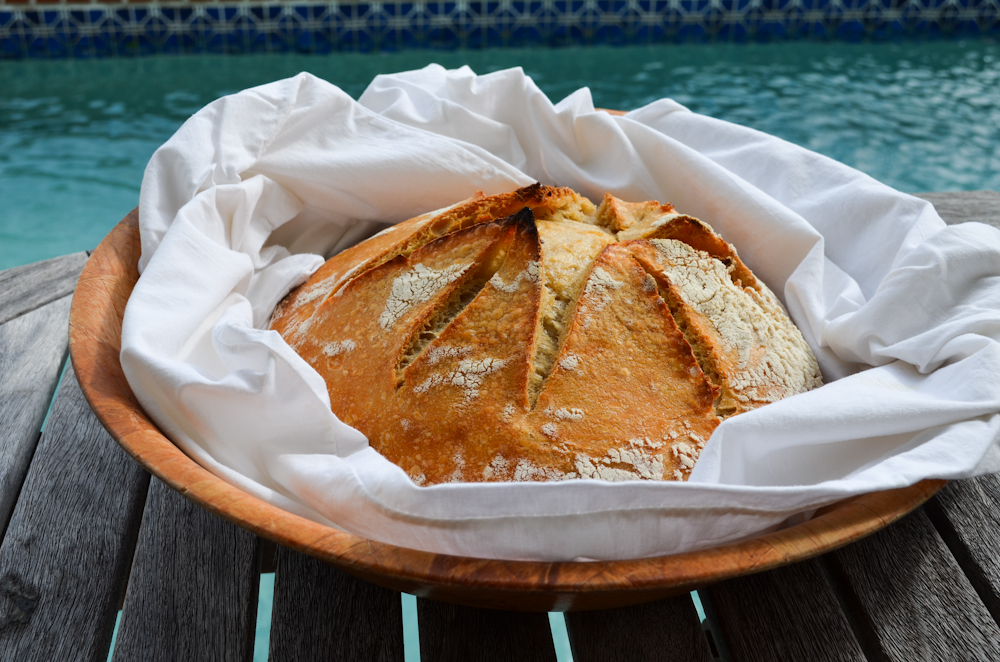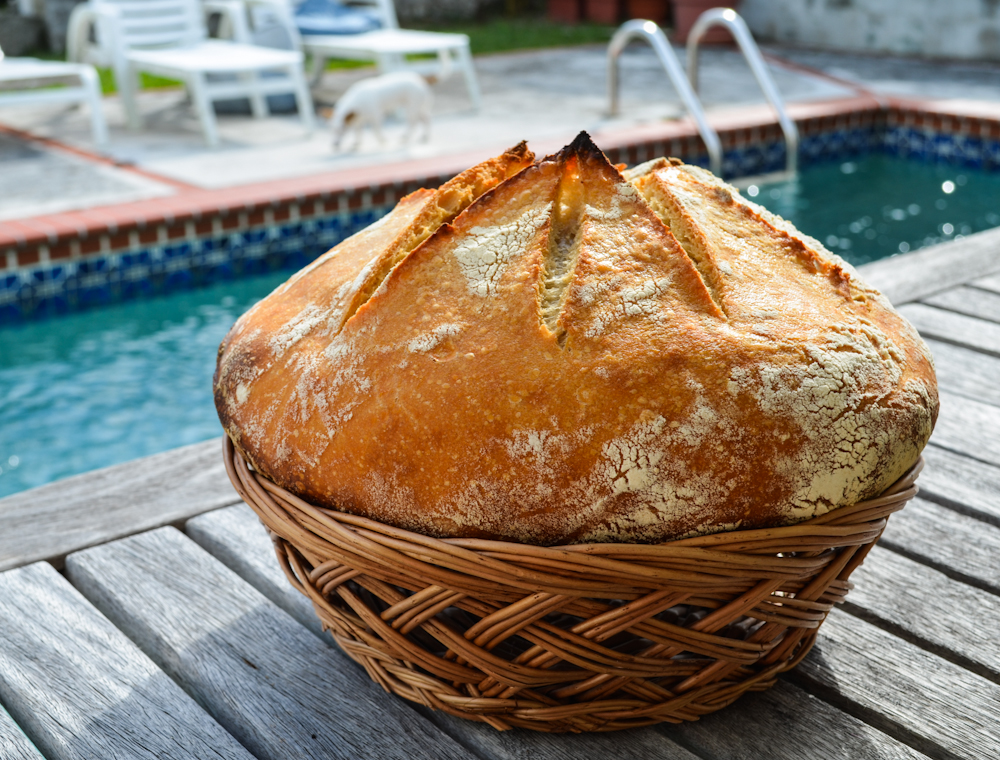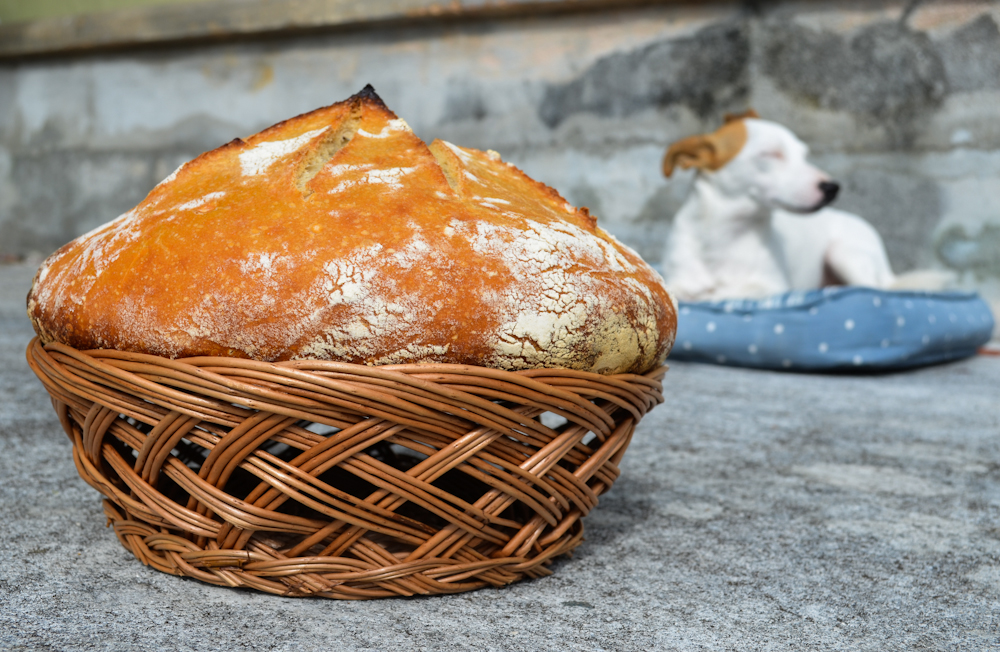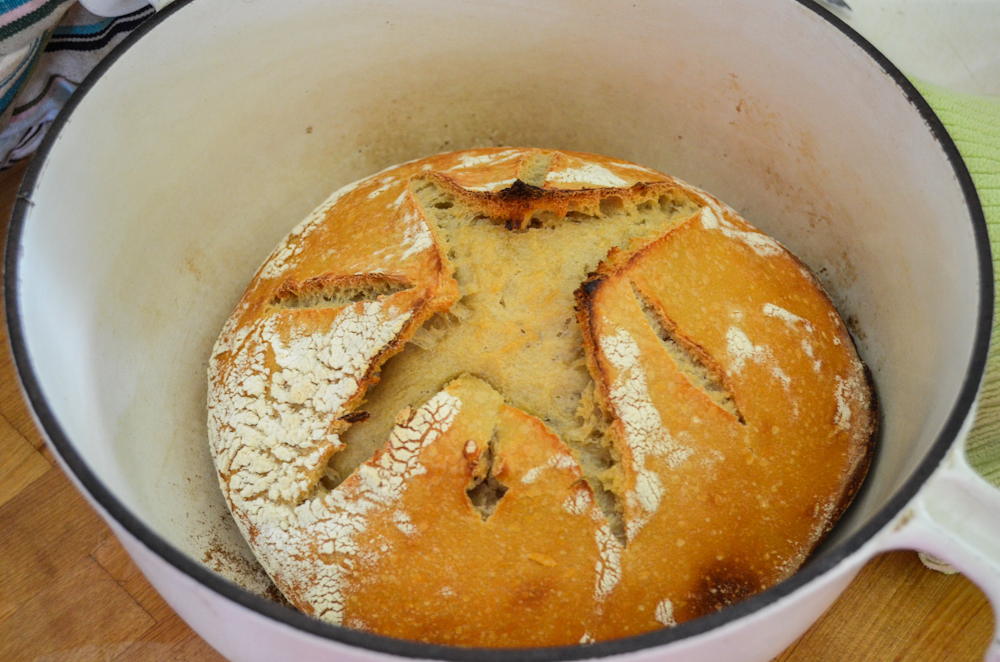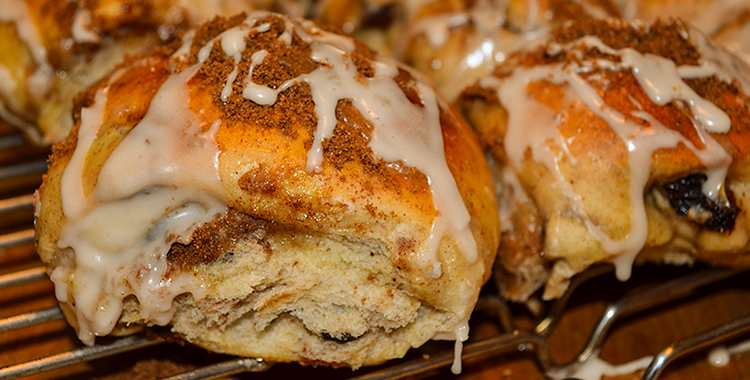What do you get when you lovingly coax a sourdough starter to life, stretch and fold for hours and wake up at 4am to do a final proof? Perfection. This Sourdough Boule has a crunchy golden crust and soft, airy interior- beautiful for dunking in soup or serving with jam.
Adapted from Chef Jacob. I did find that I needed to adjust the quantity of flour because my dough was unworkably sticky. This was most likely due to a very wet starter.
275g Warm Water
500g Sourdough Starter (approximately 100% hydration rate i.e. 1:1 flour:water)
450g Bread Flour
100g Whole Wheat Flour
20g Salt
- Check to be sure your starter is ready by dropping a glob in a beaker of water. If it floats, you’re good to go. If not, you may need to feed your starter and try again later.
- Stir together warm water and starter using a wooden spoon. Pour in flours and bring together to form a shaggy, ugly mass.
- Let autolyse for 30 minutes covered, in a warm spot.
- Add in salt and stir to incorporate.
- Turn dough out onto your work surface. If it is so sticky you really can’t work it, go ahead and add small amounts of flour. The dough should release from the surface, but will leave behind scraggly, wet pieces. For ~ 5 minutes, slap the dough down on the surface and then fold it in half, towards your body. Check out Chef Jacob’s method. This is not easy. You’ll probably end up with dough and flour all over the place. Also, don’t do what I do and forget to take off your sweatshirt before you start folding and slapping. My sleeves are STILL caked with dried dough. Once the dough is more cohesive and releases easier from the board, drag it through a little pile of flour and fold it in half four times. Again, check out the video linked above for specifics. Essentially we don’t want to knead the dough because that ruins the airy structure of the bread.
- Cover with greased plastic wrap and let sit for 10 minutes. Repeat the stretch and fold technique for a total of 3-4 times.
- After the 3-4 repetitions roll the ball in flour and let bulk ferment at room temp for 3-4 hours or until 1.5 times its original volume.
- Gently release from the bowl and do several tension pulls to make the top of the dough nice and taught. Let rest and then repeat with more tension pulls.
- Dust with flour and let dough proof in a wicker basket or bowl covered with linen cloth for another 3-4 hours or until 1.5 times the volume. Toward the end of the proofing time preheat the oven to 500ºF and place a large cast iron pot in the oven.
- When ready to bake, place the dough in the pot, slice top with a sharp knife and bake for 20 minutes, covered.
- Remove lid, turn down the oven to 425-250ºF and bake an additional 30 minutes or until golden brown and crackled.
- Remove from pot and let cool on a wire rack.
Note: You do need a scale for this one, or you can try to find an online conversion tool to tell you volume for mass.
